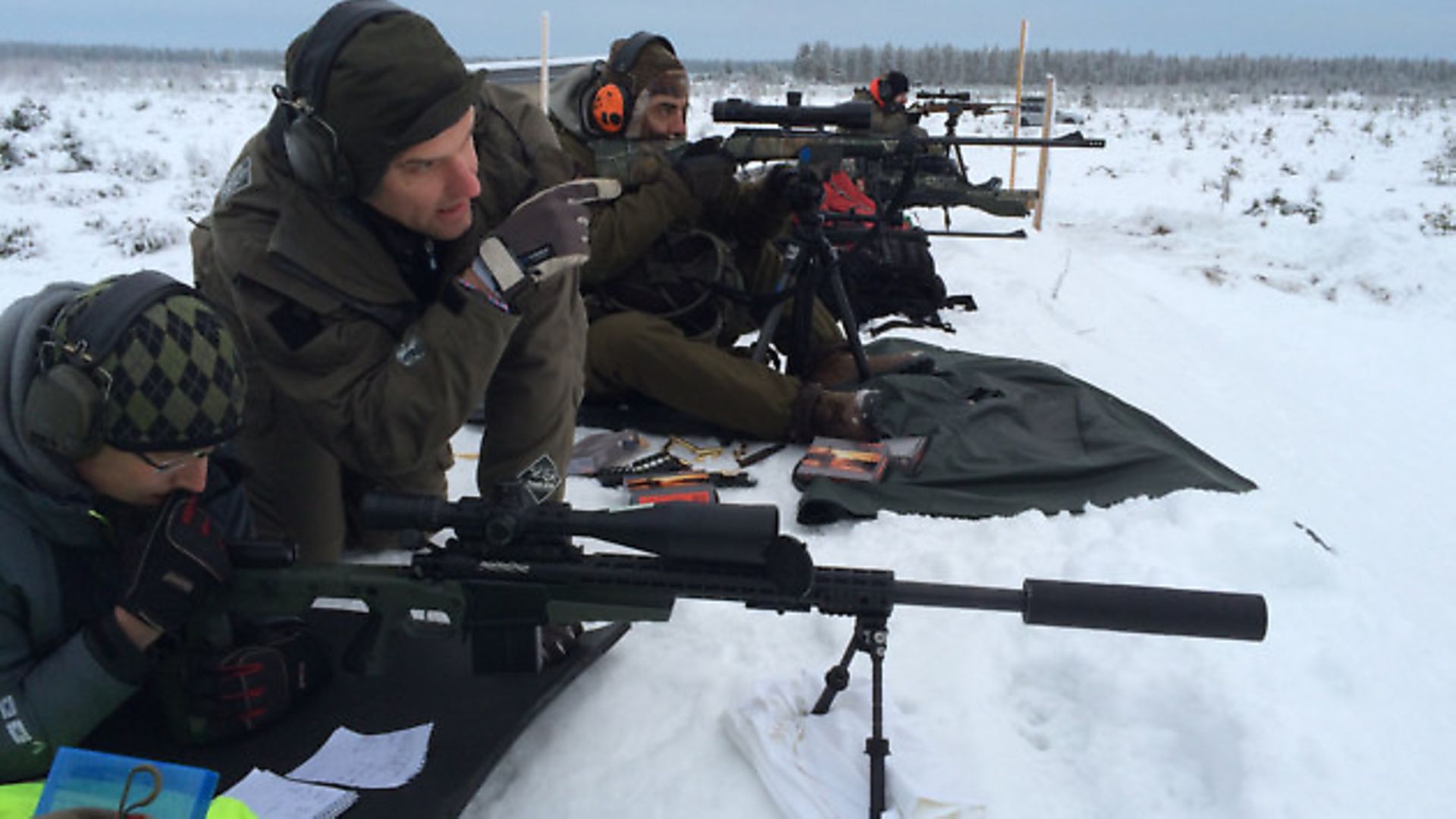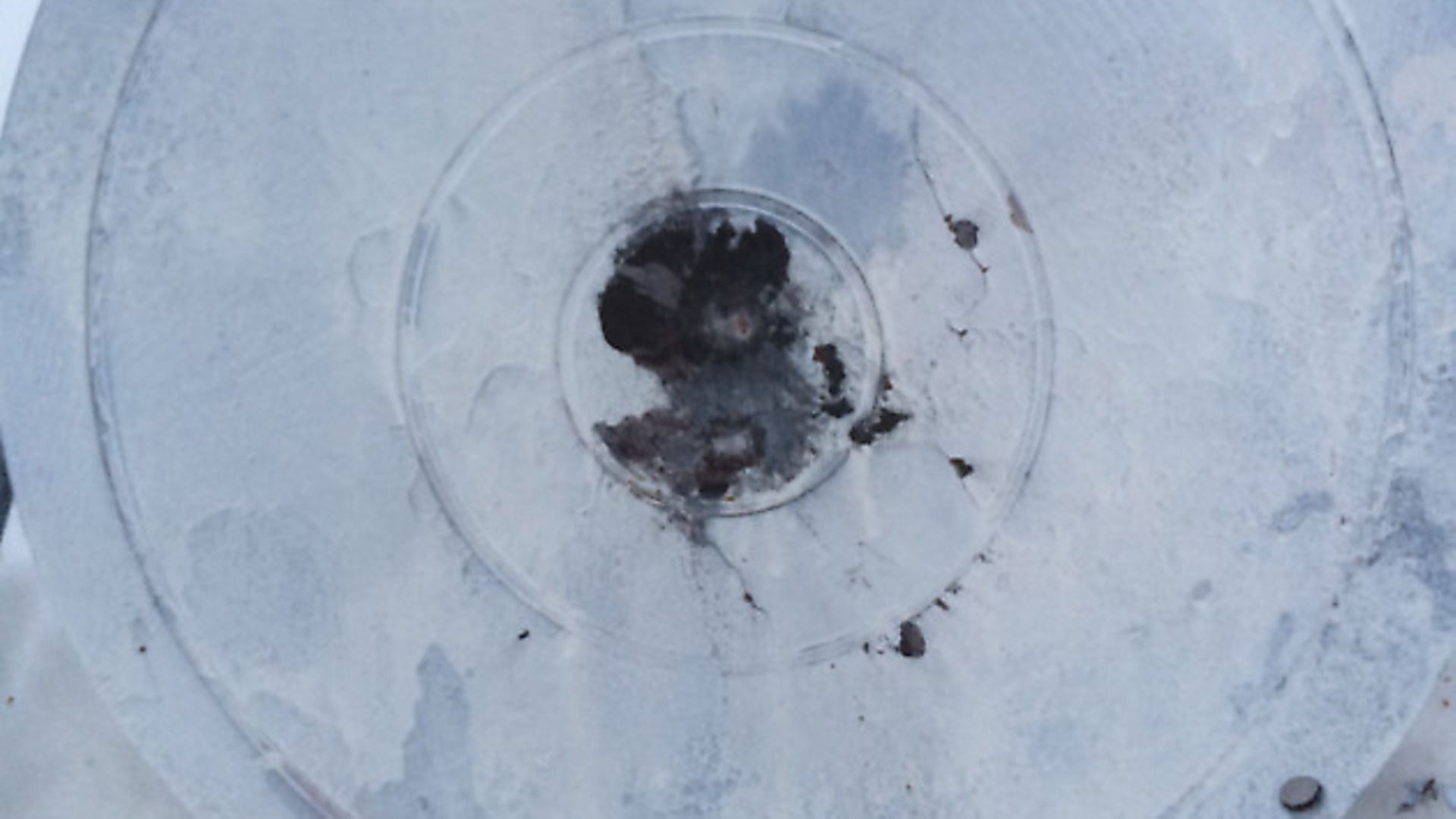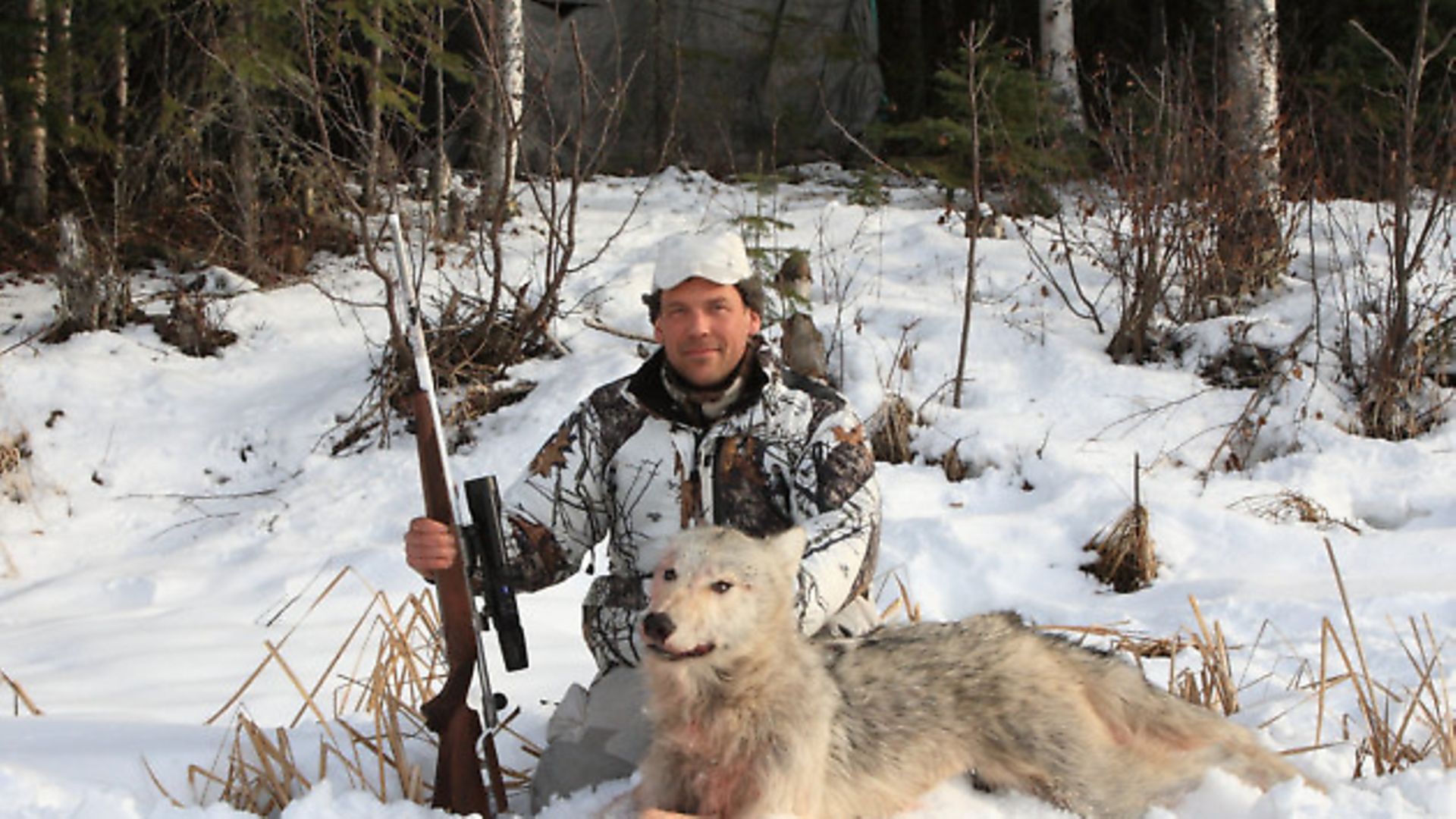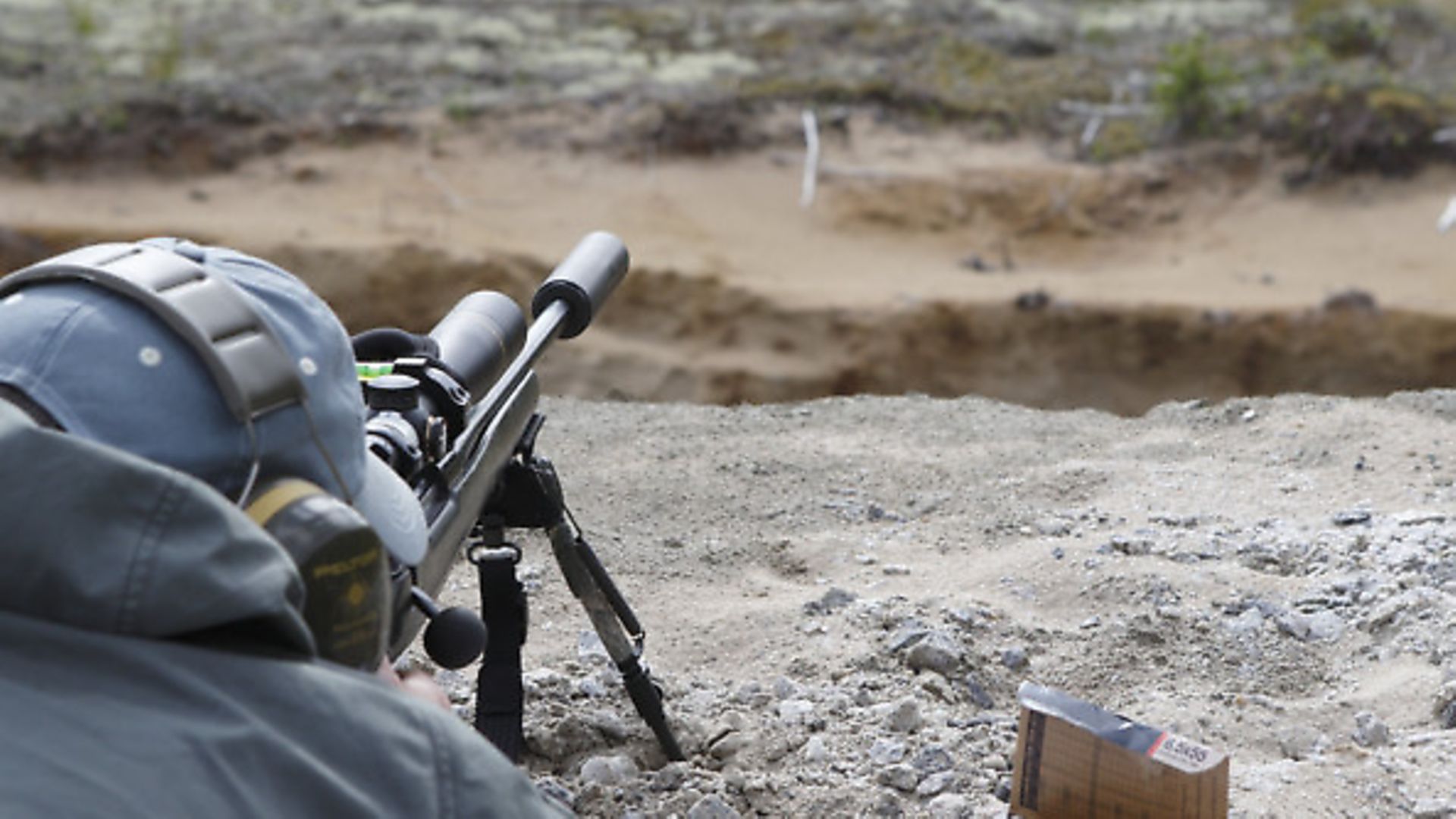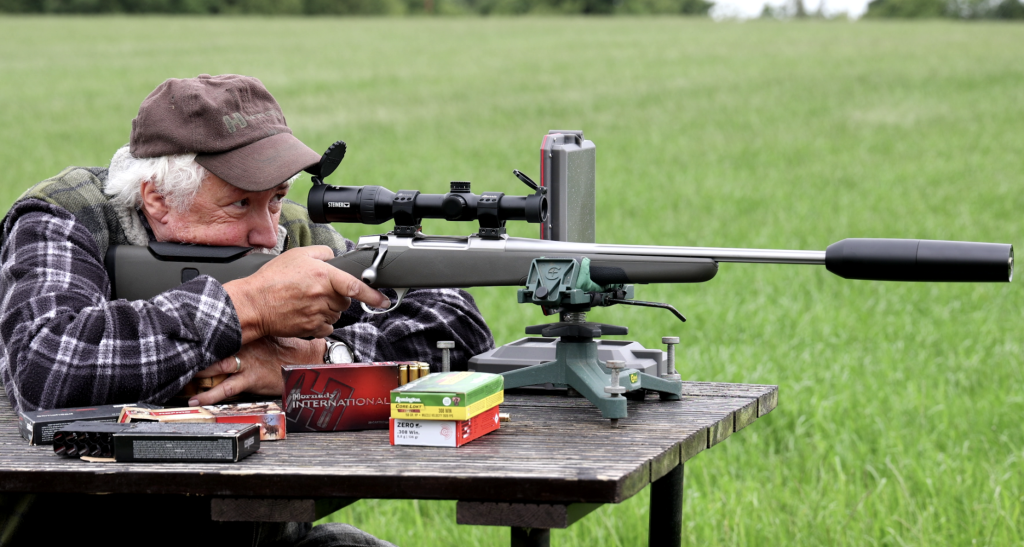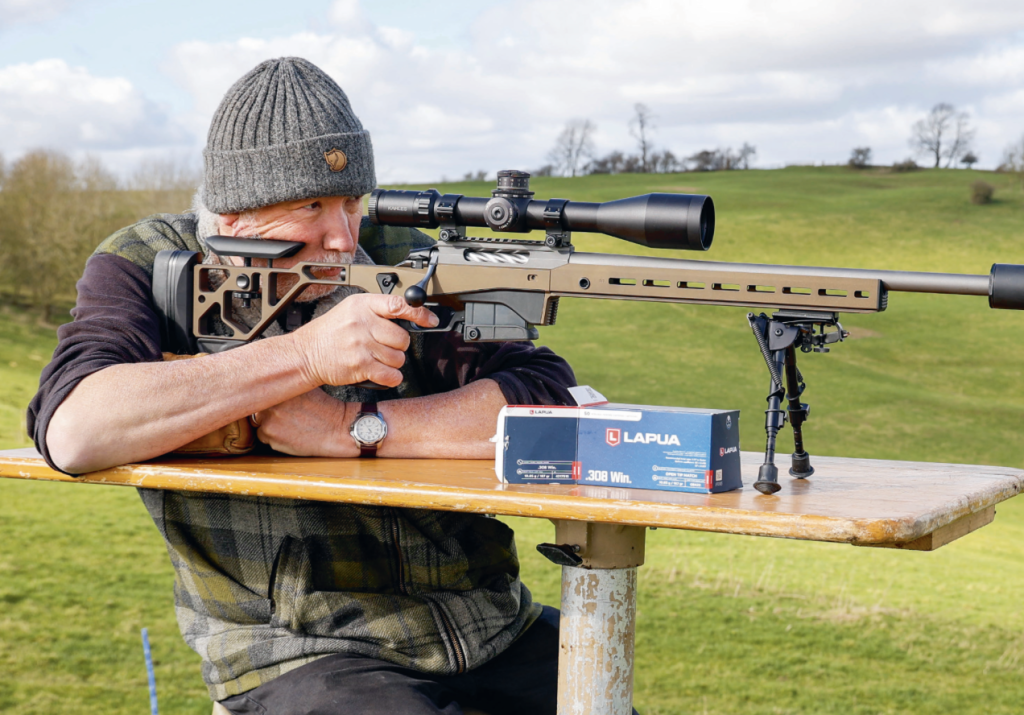The effects of powder temperature on muzzle velocity – how the weather can cause misfires
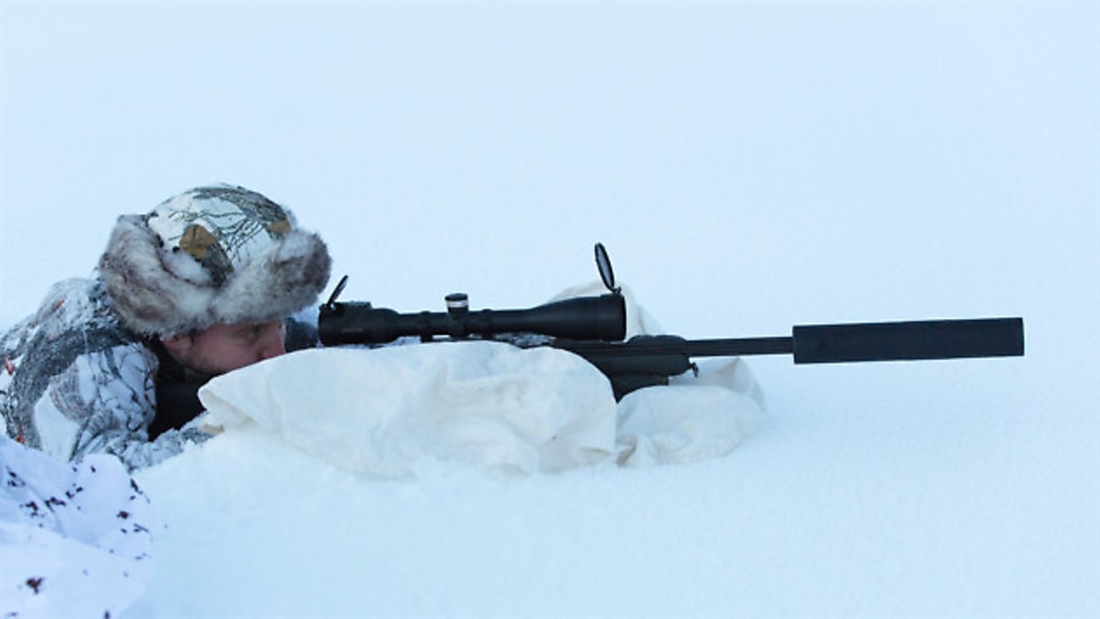
Ulf Lindroth gives a lesson on preventing misfires in extremely low temperatures, focusing on the effects of powder temperature on muzzle velocity
The effect of powder temperature on muzzle velocity is hardly of importance to a British hunter at home, but if you travel north for a cold winter hunt it can make or break a crucial shot.
Picture a hunting camp in northern Canada in February. It is a once in a lifetime hunt for a wolf. The guide has instructed you to be prepared for shots out past 400 yards, and even if you struggle to keep your fingers and toes functioning, you know you’re prepared. You know your trajectory by heart. You struggle. You suffer. But you keep hunting, day in and day out, hoping for that one chance.
Eventually, there it is. The huge subarctic wolf of your dreams trots across a lake ice in front of you. The rangefinder says 420 yards, as the animal stops to look your way. Surely it can’t have seen you? Well, there is no time to waste. You dial your scope adjustments and settle into position. A standing wolf. A perfect rest. A perfect squeeze… Then a whirling wolf departing at a full gallop. And that’s that. No rug in front of your fireplace, buddy!
Winter hunting can be a handful. Not only will the cold challenge you and the welfare of your extremities, but it can challenge the function of your equipment. As if that’s not enough, it will even mess with your trajectory. Needless to say, you will need to prepare.
It doesn’t have to be a wolf hunt. A winter hunt for capercaillie on skis in Scandinavia will put you and your kit to the test in the same way. Personally, I need to adjust for changes in point of impact during a single spring day of fox hunting. An early morning temperature of -20°C versus 0°C at midday will have a significant effect on my .204 Ruger loads at 300 yards.
Here are some thoughts on winter riflery. Let’s start with a few rules meant to keep your firearm operating. We’ll work our way in from the outside, but we’ll eventually get to the cartridge and back on target.
Rule number one
Remove all grease from inside your bolt and from your trigger mechanism. Grease will stiffen and cause misfires as temperatures drop.
This is not just a theoretical problem. Firing pins do hang up or slow up inside greasy bolts. Trigger mechanisms do fail. A ‘dry’ rifle should be the rule. Avoid grease and be very conservative with oil.
As a side note, if or when you do get a misfire in cold weather, make sure to keep the muzzle in a safe direction. Delayed firing is about as common as misfires when grease freezes. With frozen trigger mechanisms, I’ve seen shots go off at the first attempt to lift the bolt handle.
Rule number two
A piece of tape over the muzzle keeps the snow out but will not affect point of impact. If you still get snow in the barrel, don’t try to blow it out by mouth. If the snow wasn’t enough to damage your barrel in a subsequent shot, the resulting plug of ice will be. The bulge it may create in your barrel can be invisible, but still means the end of your rifle’s accuracy. Carrying a cleaning rod in sections in your backpack is an excellent idea, but start with tape over your muzzle.
Be just as careful to avoid getting snow in your ejection port, magazine port, or anywhere else where moving parts are involved. It does not take much snow or ice in the chamber to make it impossible to close the bolt on a cartridge. You may melt that ice away with a lighter (keep it warm or the gas may not work) or a match, but few game animals have the patience for that procedure.
Rule number three
When you get home after a day of hunting, either leave the gun out in the cold or put it in a tight container before bringing it into a warm cabin. Water will condensate on a cold gun if it is exposed to warm air. Apart from creating a need for more gun maintenance, a sudden huge change in temperature is a very efficient way to check the quality of optics; a lot of scopes prove less than perfect when exposed to this test. In other words, bringing your rifle from the cold into a warm cabin may leave you with a foggy scope.
Northern wildlife photographers are used to this problem and invariably put their cameras into airtight plastic bags before taking them inside. That way, condensation will appear outside the plastic bag rather than on – and inside – the camera. The same holds true for guns and optics. A good and tight gun case will be helpful. Leave the gun in it for a couple of hours before taking it out.
Powder performance
As for the actual hitting of small, distant targets, there is one thing rather peculiar to the far north and that is the importance of your powder temperature.
This is a never-ending topic in northern hunting camps. It isn’t just a rifle shooting issue either. Many shotgun cartridges suffer a critical loss of velocity when used in -20°C or -30°C temperatures. In the old days it was said that the thick fur or plumage of small game in winter made them harder to kill, but it only takes a good chronograph to see that the problem is powder performance.
Rifle shooters are less concerned with the loss of power, more with a shifting point of impact. The question is obvious: how much will it shift? Well, it depends.
Unfortunately, there are too many factors involved to use rules of thumb; the case volume, the bullet weight, the primer, the type of powder used, even what brand of powder… all of it will matter. You need to test this before your big winter hunt.
Then again, once you have done your testing, an ordinary ballistic app will help you make all necessary calculations. From then on, you’ll never need to guess your point of impact, regardless of weather.
A hunter living in the north will simply set a batch of ammunition aside for testing and shoot some of it through a chronograph on a warm summer day, and then some on a cold winter day. In more temperate climes there are other ways to achieve roughly the same result.
On long-range classes in summer, I’ve simply had students put some ammunition into a freezer. We’ve had chronographs ready and sent a driver for the ammo. It’s been brought in a cooler with ice and we’ve done our best to keep track of its temperature.
This will not provide ammunition as cold as you might experience on a really cold northern winter day. It will also not provide quite as predictable temperatures, since the frozen cartridges warm up rather quickly.
Admittedly, it is difficult to get very accurate measurements of their temperature. However, the test will still give you an idea of how much your muzzle velocity is affected by powder temperature. It will be far better than guessing.
Some cartridges are not affected much at all. For others, the difference between summer and winter point of impact may be several inches at 300 yards. That may cost you a wolf. It will certainly cost you a fox or a capercaillie and, if the range happens to be 400 or 500 yards, it can wreck any shot.
As usual with rifle shooting at extended ranges, you must try to minimise the unknown parameters. The effect of powder temperature on muzzle velocity can be checked, and thus should be checked – at least when extremes are expected.
Related Articles
Get the latest news delivered direct to your door
Subscribe to Rifle Shooter
Elevate your shooting experience with a subscription to Rifle Shooter magazine, the UK’s premier publication for dedicated rifle enthusiasts.
Whether you’re a seasoned shot or new to the sport, Rifle Shooter delivers expert insights, in-depth gear reviews and invaluable techniques to enhance your skills. Each bi-monthly issue brings you the latest in deer stalking, foxing, long-range shooting, and international hunting adventures, all crafted by leading experts from Britain and around the world.
By subscribing, you’ll not only save on the retail price but also gain exclusive access to £2 million Public Liability Insurance, covering recreational and professional use of shotguns, rifles, and airguns.
Don’t miss out on the opportunity to join a community of passionate shooters and stay at the forefront of rifle technology and technique.



